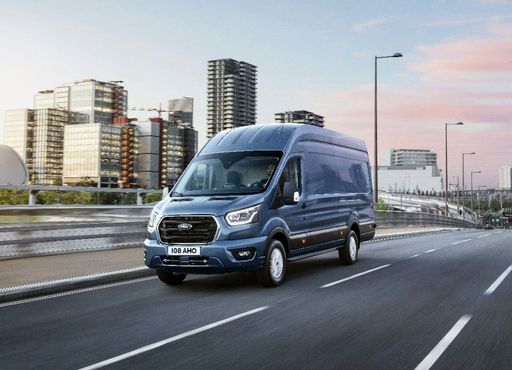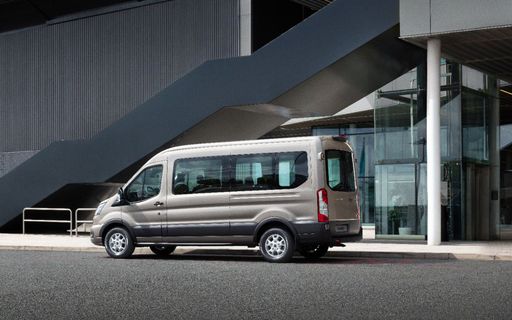Citroen Jumper vs Ford Transit Bus - Differences and prices compared
Costs and Efficiency:
Looking at overall running costs, both models reveal some interesting differences in everyday economy.
Ford Transit Bus has a minimal advantage in terms of price – it starts at 50500 £, while the Citroen Jumper costs 55100 £. That’s a price difference of around 4580 £.
Engine and Performance:
Under the bonnet, it becomes clear which model is tuned for sportiness and which one takes the lead when you hit the accelerator.
When it comes to engine power, the Citroen Jumper has a clearly edge – offering 279 HP compared to 150 HP. That’s roughly 129 HP more horsepower.
There’s also a difference in torque: Citroen Jumper pulls hardly perceptible stronger with 410 Nm compared to 390 Nm. That’s about 20 Nm difference.
Space and Everyday Use:
Beyond pure performance, interior space and usability matter most in daily life. This is where you see which car is more practical and versatile.
Seats: Ford Transit Bus offers decisively more seating capacity – 9 vs 3.
In curb weight, Ford Transit Bus is noticeable lighter – 2338 kg compared to 2865 kg. The difference is around 527 kg.
When it comes to payload, Citroen Jumper a bit takes the win – 1385 kg compared to 1162 kg. That’s a difference of about 223 kg.
Who comes out on top?
Overall, the Citroen Jumper shows itself to be is largely superior and secures the title of DriveDuel Champion.
It convinces with the more balanced overall package and proves to be the more versatile choice for everyday use.

Citroen Jumper
Costs and Consumption
View detailed analysis
Engine and Performance
View detailed analysis
Dimensions and Body
View detailed analysis
Citroen Jumper
The Citroen Jumper is a no-nonsense workhorse that swaps flash for sheer practicality, with a spacious load area and composed, user-friendly driving manners that make busy workdays easier. It won’t win any beauty contests, but its sensible packaging, comfortable cab and wallet-friendly running make it a compelling choice for tradespeople and small businesses.
detailsFord Transit Bus
The Ford Transit is the reliable people-mover operators turn to when they need space, stamina and sensible running costs without fuss. It doesn't try to be glamorous, but its practical interior, flexible layouts and honest character make it a smart, stress-free choice for shuttle services and group transport.
details @ Ford Motor Company / Ford Media Center
@ Ford Motor Company / Ford Media Center
 @ Ford Motor Company / Ford Media Center
@ Ford Motor Company / Ford Media Center
 @ Ford Motor Company / Ford Media Center
@ Ford Motor Company / Ford Media Center
 @ Ford Motor Company / Ford Media Center
@ Ford Motor Company / Ford Media Center
|
|
|
|
|
Costs and Consumption |
|
|---|---|
|
Price
55100 - 57800 £
|
Price
50500 - 52900 £
|
|
Consumption L/100km
-
|
Consumption L/100km
9.4 - 9.5 L
|
|
Consumption kWh/100km
26.20 kWh
|
Consumption kWh/100km
-
|
|
Electric Range
424 km
|
Electric Range
-
|
|
Battery Capacity
97.80 kWh
|
Battery Capacity
-
|
|
co2
0 g/km
|
co2
245 - 248 g/km
|
|
Fuel tank capacity
-
|
Fuel tank capacity
70 L
|
Dimensions and Body |
|
|---|---|
|
Body Type
Cargo Van
|
Body Type
Bus
|
|
Seats
3
|
Seats
9
|
|
Doors
4
|
Doors
4
|
|
Curb weight
2865 - 2940 kg
|
Curb weight
2338 - 2385 kg
|
|
Trunk capacity
-
|
Trunk capacity
0 L
|
|
Length
5998 - 6363 mm
|
Length
5531 - 5981 mm
|
|
Width
2050 mm
|
Width
2059 mm
|
|
Height
2612 - 2850 mm
|
Height
2530 - 2533 mm
|
|
Max trunk capacity
13000 - 17000 L
|
Max trunk capacity
-
|
|
Payload
560 - 1385 kg
|
Payload
1115 - 1162 kg
|
Engine and Performance |
|
|---|---|
|
Engine Type
Electric
|
Engine Type
Diesel
|
|
Transmission
Automatic
|
Transmission
Automatic
|
|
Transmission Detail
Reduction Gearbox
|
Transmission Detail
Automatic Gearbox
|
|
Drive Type
Front-Wheel Drive
|
Drive Type
Front-Wheel Drive
|
|
Power HP
279 HP
|
Power HP
130 - 150 HP
|
|
Acceleration 0-100km/h
-
|
Acceleration 0-100km/h
-
|
|
Max Speed
90 - 130 km/h
|
Max Speed
-
|
|
Torque
410 Nm
|
Torque
360 - 390 Nm
|
|
Number of Cylinders
-
|
Number of Cylinders
4
|
|
Power kW
205 kW
|
Power kW
96 - 110 kW
|
|
Engine capacity
-
|
Engine capacity
1996 cm3
|
General |
|
|---|---|
|
Model Year
2024
|
Model Year
2024
|
|
CO2 Efficiency Class
A
|
CO2 Efficiency Class
G
|
|
Brand
Citroen
|
Brand
Ford
|
Is the Citroen Jumper offered with different drivetrains?
Available configurations include Front-Wheel Drive.
The prices and data displayed are estimates based on German list prices and may vary by country. This information is not legally binding.
